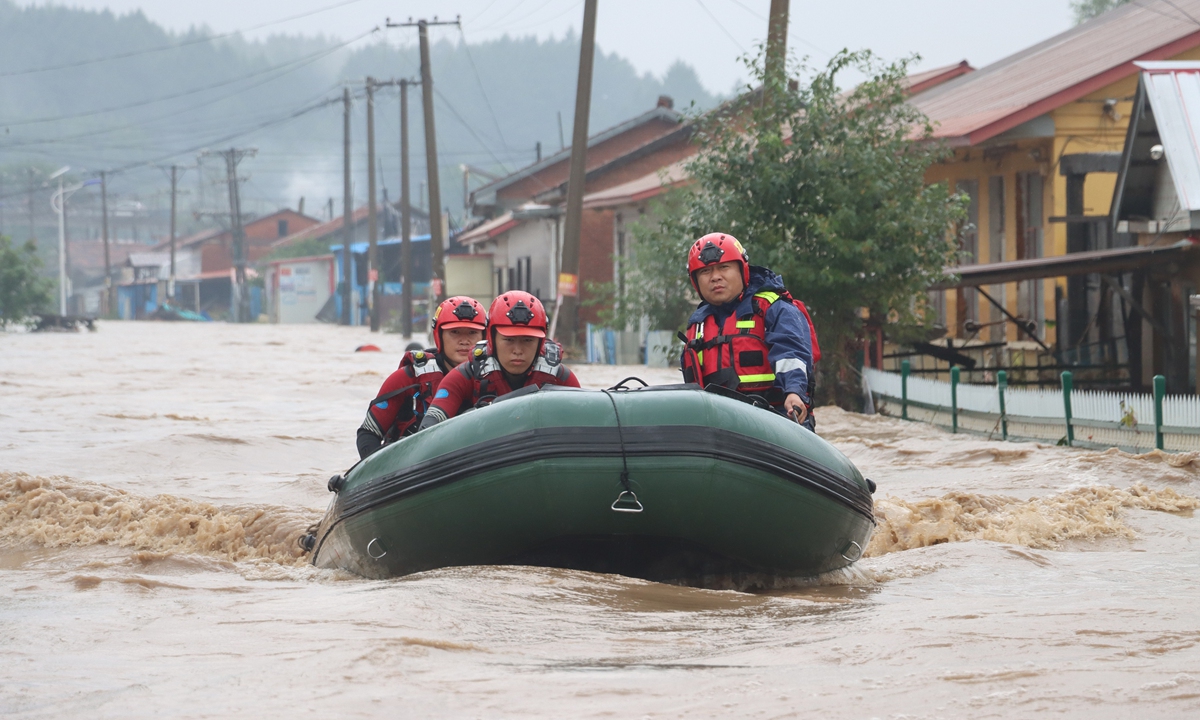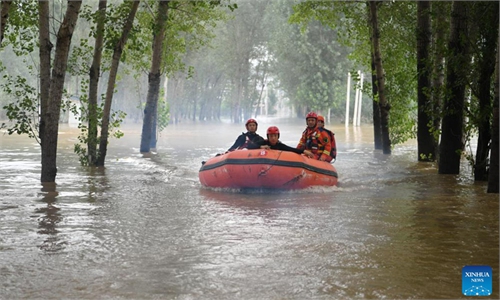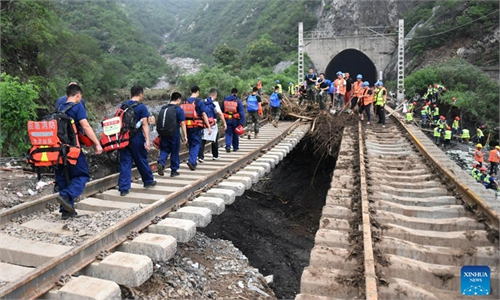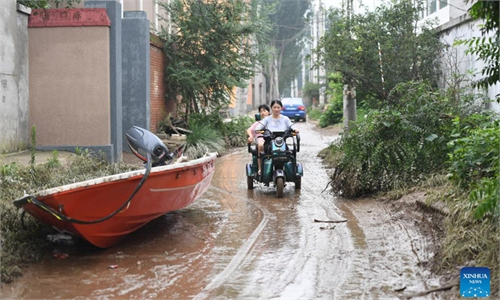25 rivers exceed warning levels in NE China's Heilongjiang; national emergency management authority sends working group

Photo: CFP
China's Ministry of Emergency Management and the National Commission of Disaster Reduction launched a national Level IV disaster relief emergency response Friday night in response to severe rainstorm and flood disasters in Northeast China's Heilongjiang Province, and deployed a working group to the disaster area to guide and assist the local authorities over the disaster relief work.
Given 21 counties, cities and districts of four cities of Harbin, Mudanjiang, Yichun and Qiqihar in Heilongjiang have suffered from hailstorm and flood disasters, of which Harbin and Mudanjiang have suffered more serious flood disasters, Heilongjiang disaster reduction authorities on Friday night issued a notice confirming a provincial level III response to natural disaster relief.
On Friday, the Harbin flood control and drought relief authority decided to raise the emergency response level for flood control to its highest level .
As of 8 am on Saturday, a total of 25 rivers, including the Lalin River and Mudan River, had exceeded water warning levels by 0.06-3.40 meters, with five rivers exceeding the guaranteed water level.
According to the Xinhua News Agency on Saturday, facing sustained rainfall, from Thursday to Friday, the Mudan River (Station 2), Mayi River (Yanshou Station) and Lalin River (Wuchang Station) had all exceeded water warning levels, reached flooding levels and showing no sign of abating.
According to the provincial disaster response authorities, the Mayi River and Lalin River are estimated to have floods severest in 50 years.
As of 8:40 am on Saturday, four large reservoirs, seven medium reservoirs and 35 small reservoirs in Heilongjiang have exceeded flood limits by 0.04 ~ 4.84 meters, according to state broadcaster CCTV.
CCTV reported that the cities of Shangzhi and Wuchang and many other areas have suffered from serious flooding with rice fields being flooded and houses washed away.
In response, Heilongjiang has issued a red alert for meteorological risks of geological disasters and a red alert for further rainstorms.
According to reports on Friday evening, Wuchang city is increasing flood discharge efforts and has safely transferred more than 20,000 residents away from at risk areas.
Wuchang, a city famous for its rice, is likely to suffer economically from the mass flooding. The area's rice planting area accounts for one tenth of that of Heilongjiang province.
Separately, Shangzhi city saw its largest rainfall since 1957. Officials moved to suspend classes, work, production, operation and business on Saturday.
Heilongjiang on Friday issued consecutive meteorological risk warnings for small- and medium-sized river flooding and a red alert for heavy rain.
The Friday warning is the fifteenth red alert for torrential rain issued by the Heilongjiang meteorological bureau since Wednesday, when Typhoon Doksuri moved further north hitting the region.
During the past three days, 31 weather stations in Heilongjiang recorded accumulated precipitation exceeding 250 millimeters, according to the provincial meteorological bureau, with 27 county-level stations breaking the record of daily extreme values.
Multiple parts of northern and southern China will face high risk of flooding in August as two or three typhoons will make landfall or influence weather systems across the country, Chinese authorities announced.
The remnants of Typhoon Doksuri have lashed the Chinese capital Beijing and neighboring Hebei Province from Saturday causing extensive flooding, leading to the loss of at least 20 lives as of Tuesday. In Beijing, 11 were killed, including two who sacrificed their lives in the line of duty in the rainstorms and flooding, and another 13 were missing as of Tuesday Evening.
According to a joint conclusion issued by the National Commission for Disaster Reduction under the Ministry of Civil Affairs, the Ministry of Emergency Management, and other related departments, the northern parts of the Yangtze River will probably suffer from periodic high temperatures and drought, parts of Fujian, Hubei, Chongqing and Sichuan provinces will face high risk of geological disasters and some parts of the southwestern parts of the country and Northwest China's Xinjiang Uygur Autonomous Region are at high risk of experiencing forest fires.
Global Times



